Teaching with Technology - Mentimeter
Teaching with Technology: Real-Time Polling with Mentimeter
In my Principles of Macroeconomics class, I integrated Mentimeter across the semester to build a more interactive and engaging classroom experience. This three-part approach included a pre-course survey, real-time knowledge checks, and reflection activities through word clouds.
Part 1: Pre-class Survey to Understand Student Preferences
Before the course began, I surveyed students on their preferred learning formats and macroeconomic interests. This allowed me to adjust the structure and content of the course to better match their preferences.
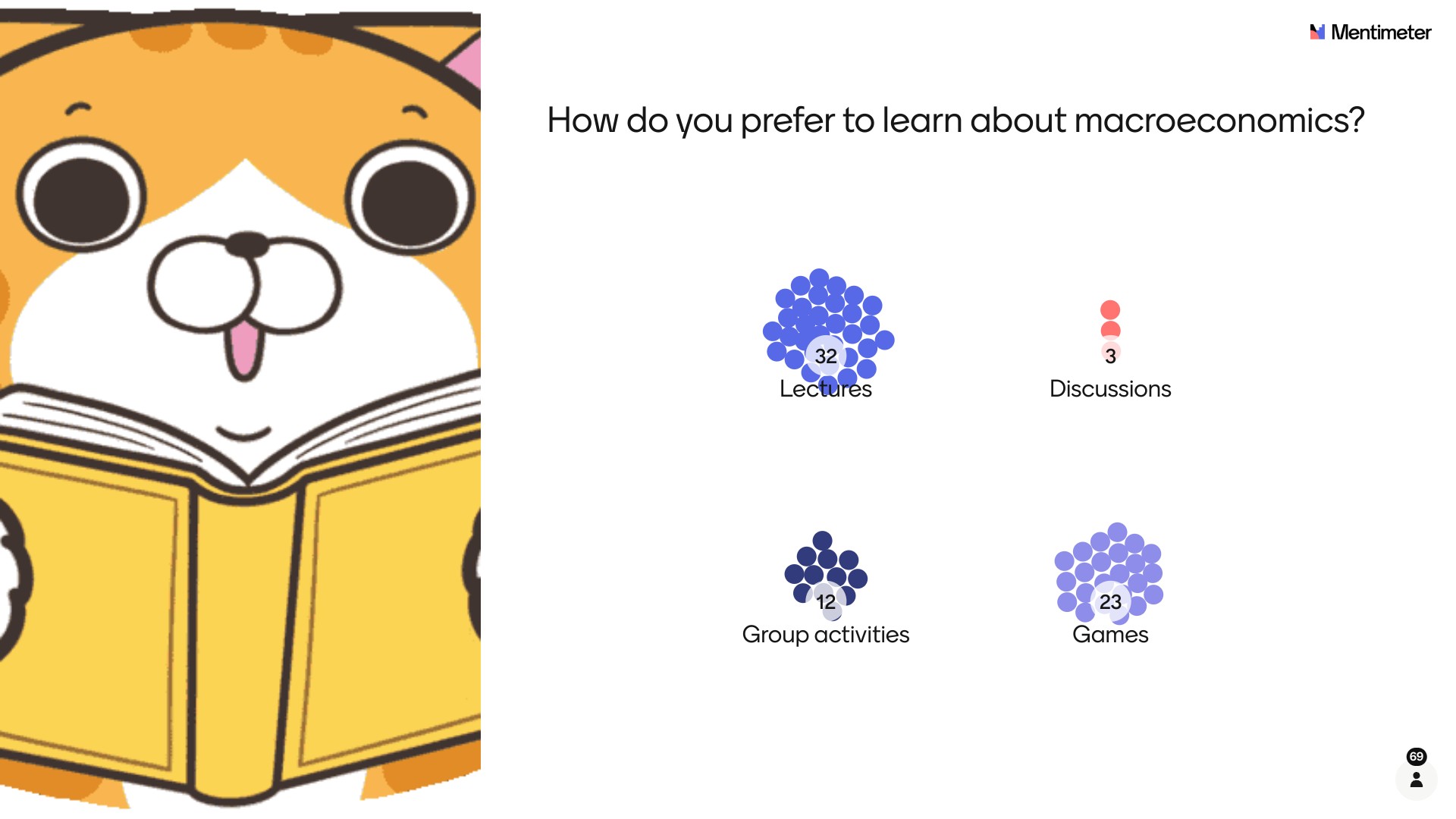
Insight: Most students preferred lecture-based delivery and game-based learning over discussions. This insight helped shape my lesson planning and use of classroom activities.
Part 2: Knowledge Checks and Live Polling
To introduce key macroeconomic topics and assess understanding, I used Mentimeter’s live multiple-choice and ranking features. This promoted active participation and enabled me to clarify misconceptions immediately.
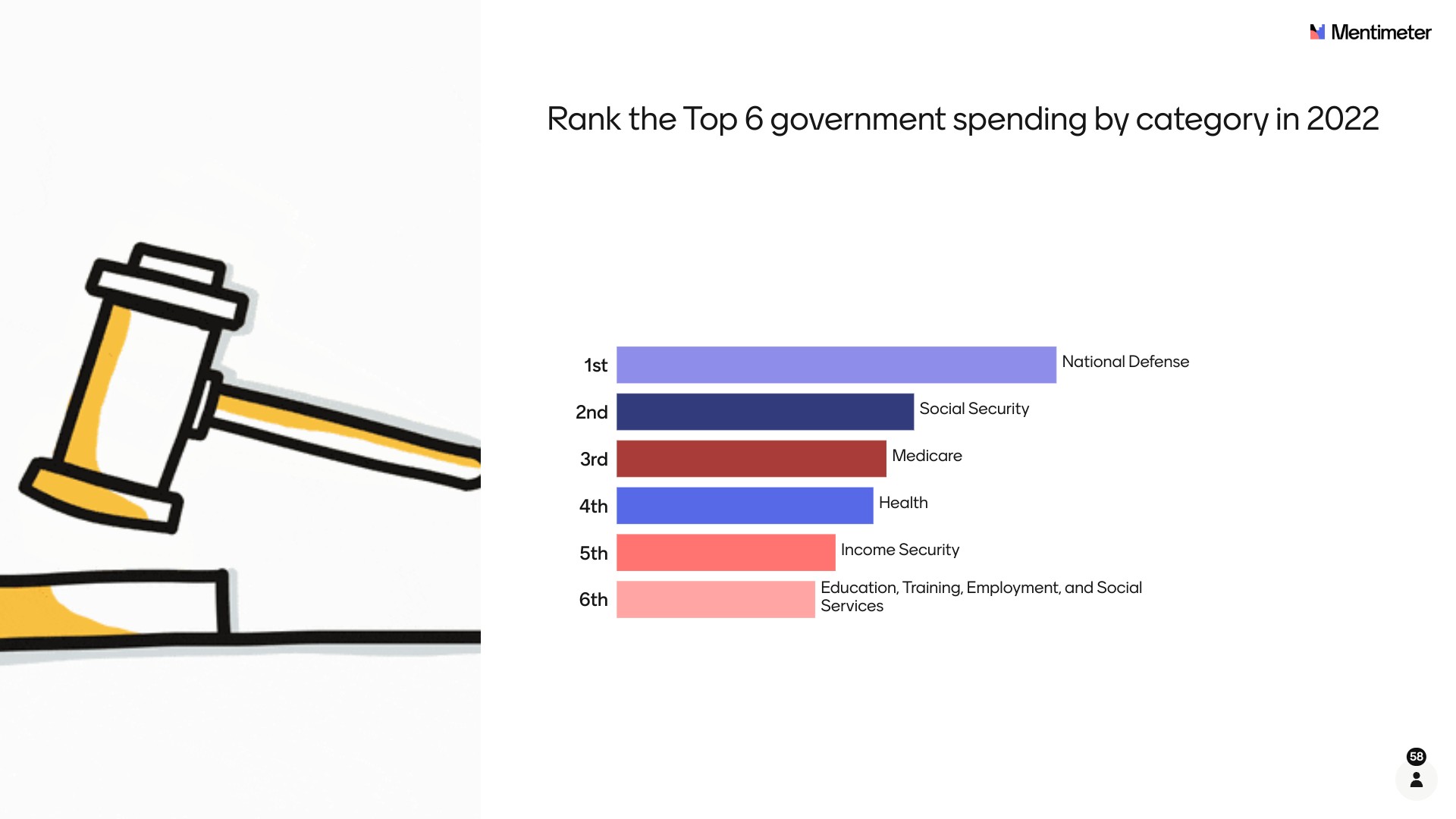
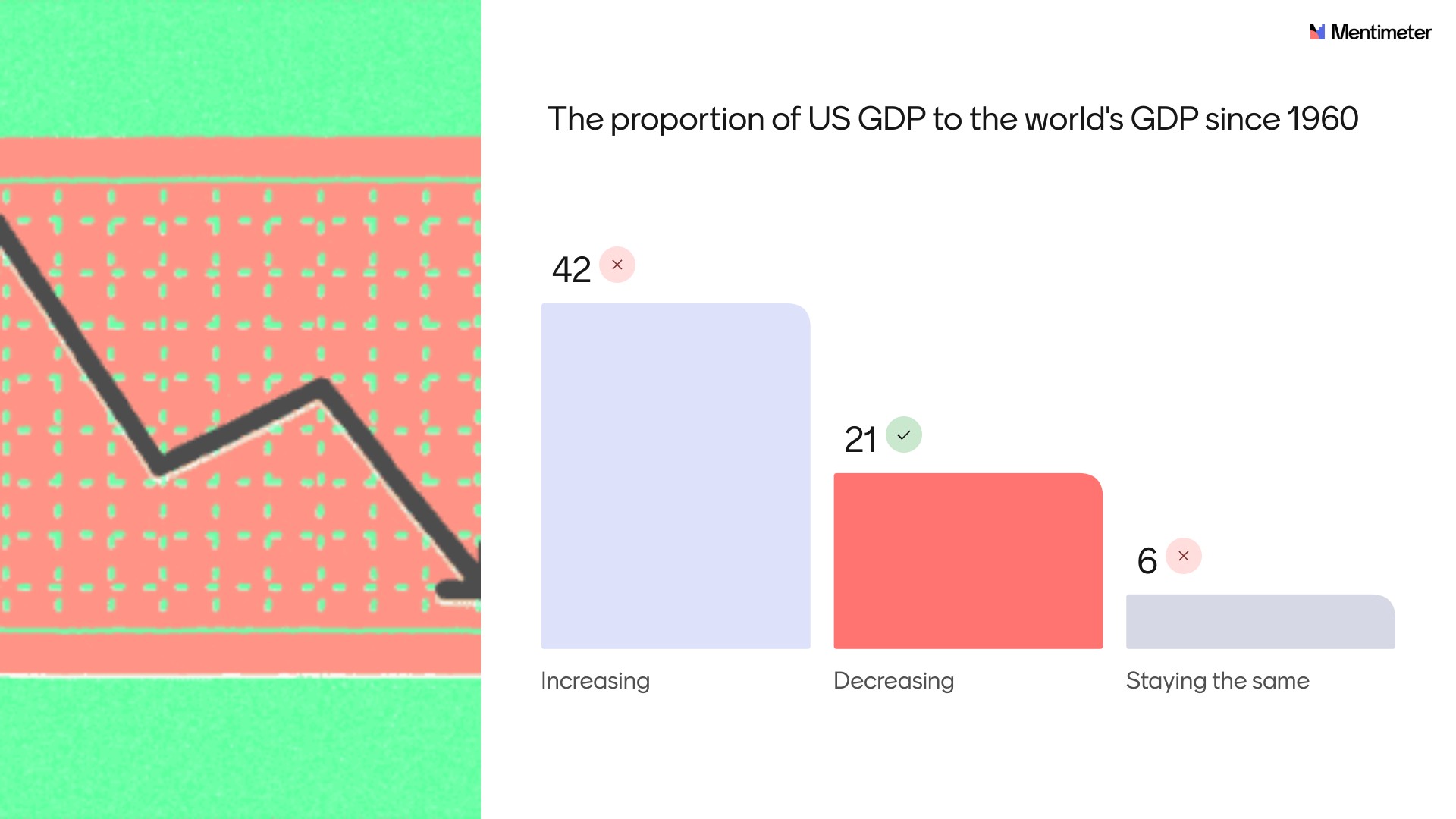
Example Questions:
- “Rank the top 6 U.S. government spending categories in 2022.”
- “The proportion of U.S. GDP to the world’s GDP since 1960?”
These live polls sparked engagement and led to rich in-class discussions.
Part 3: Reflection and Discussion Using Word Clouds
Toward the end of class, I used Mentimeter’s word cloud function to facilitate reflection and discussion. This gave students the freedom to express ideas anonymously and creatively.
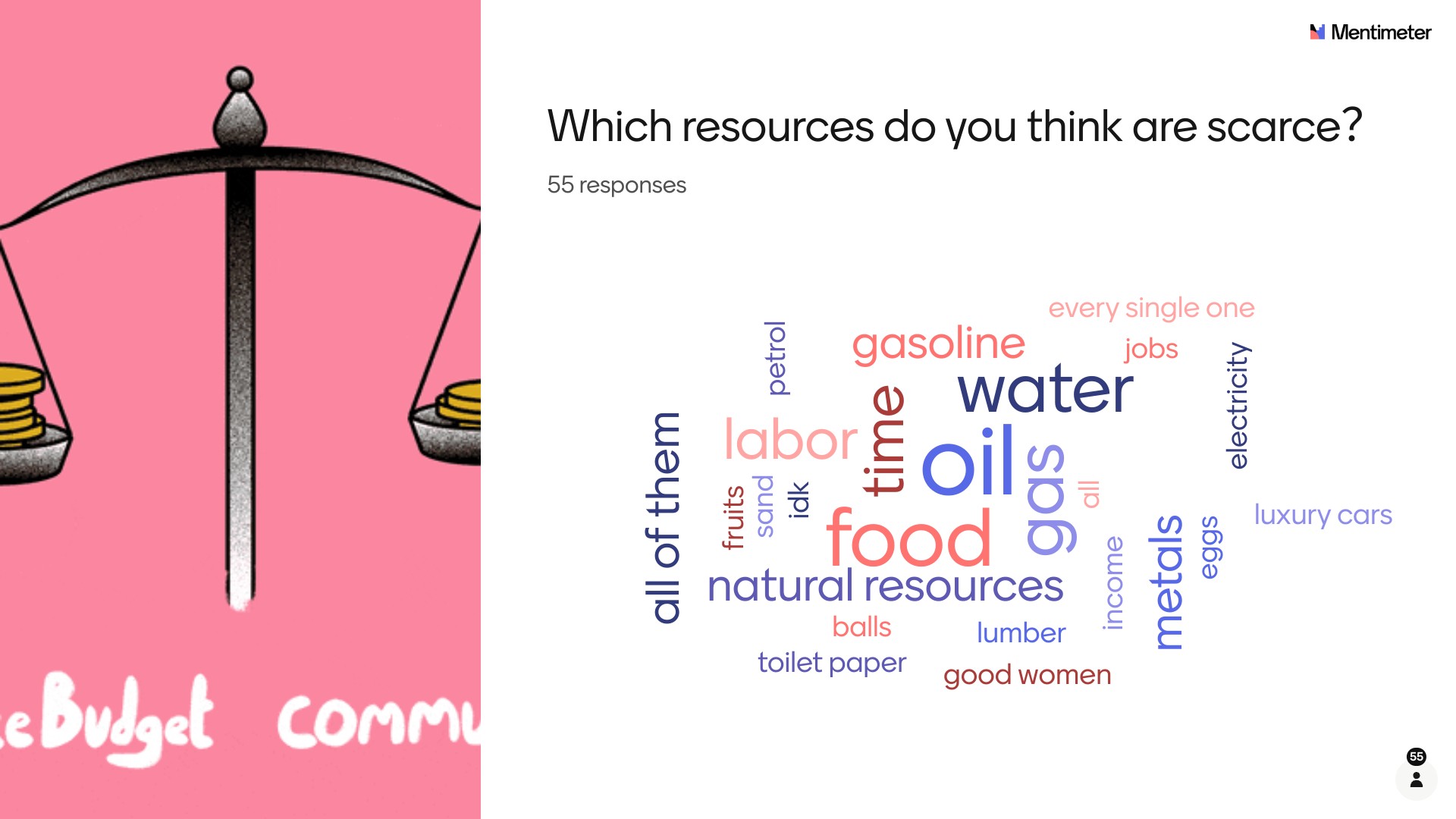
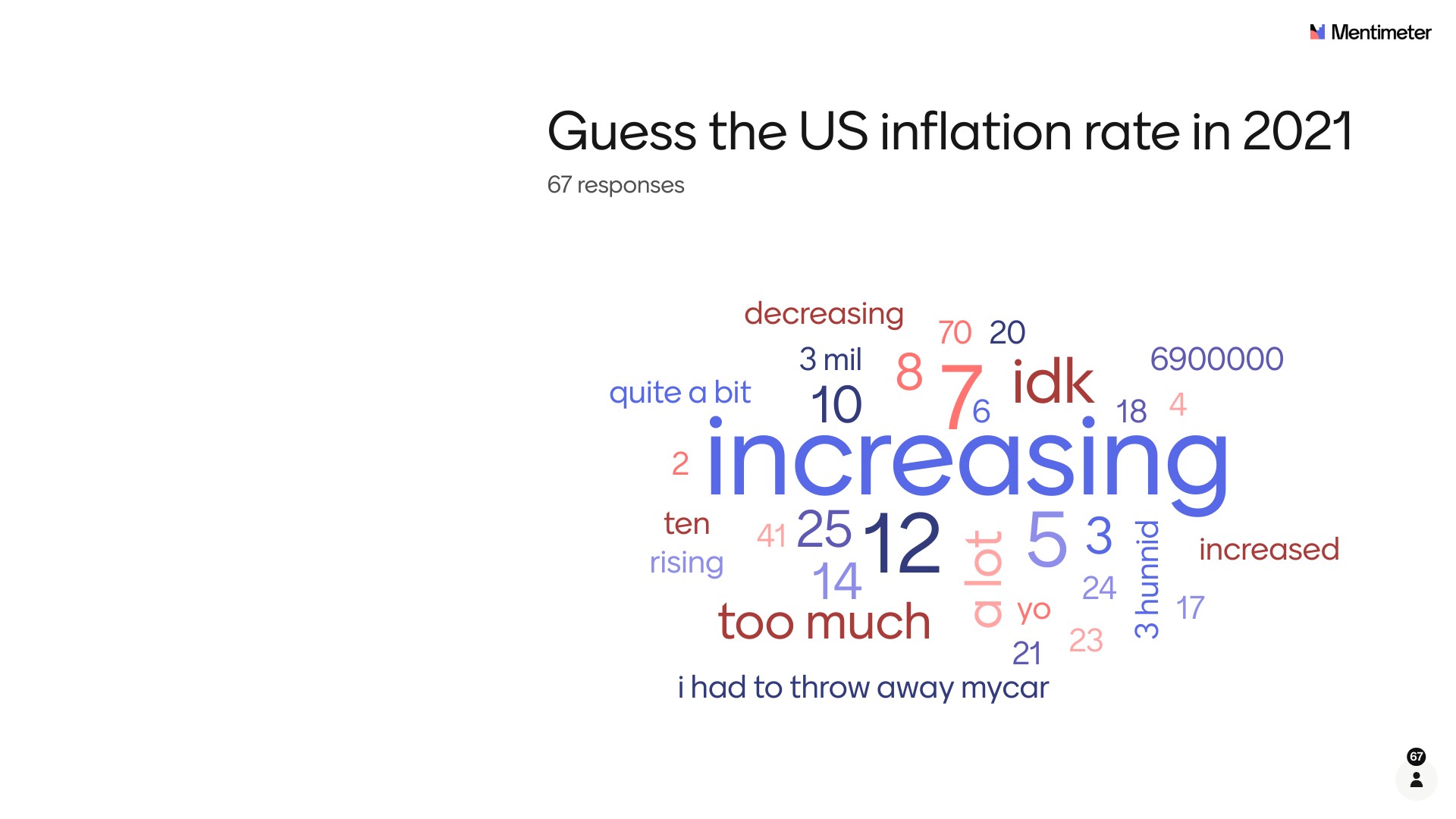
Example Prompts:
- “Guess the U.S. inflation rate in 2021.”
- “Which resources do you think are scarce?”
The responses served as a springboard for deeper conversations around economic perceptions and behavioral responses.
Summary of Impact
Mentimeter helped transform my lectures into dynamic learning experiences by:
- Allowing anonymous student engagement
- Surfacing misconceptions in real time
- Enabling data-informed teaching adjustments
Going forward, I plan to expand this integration into group competitions, concept reviews, and semester-long learning tracking.